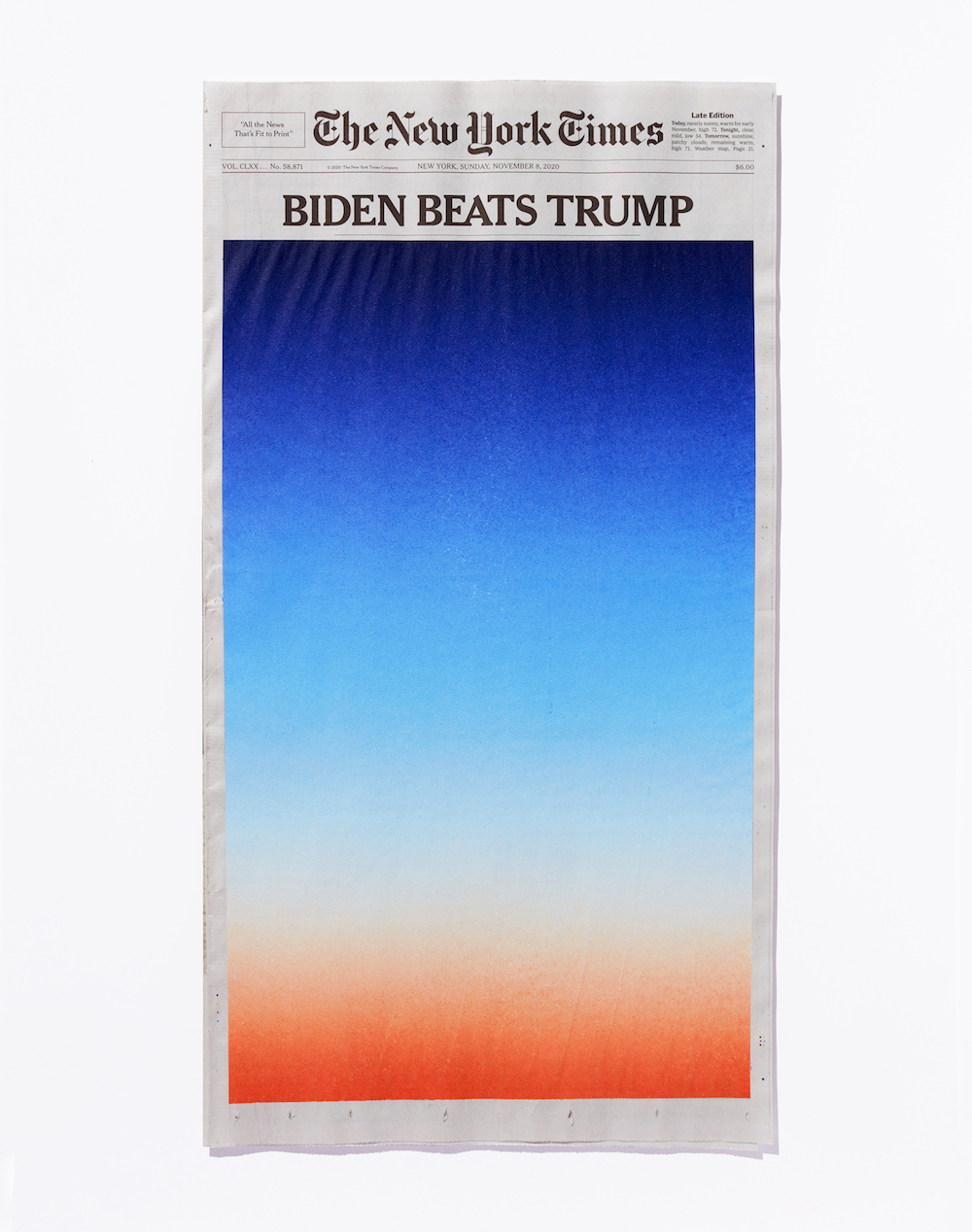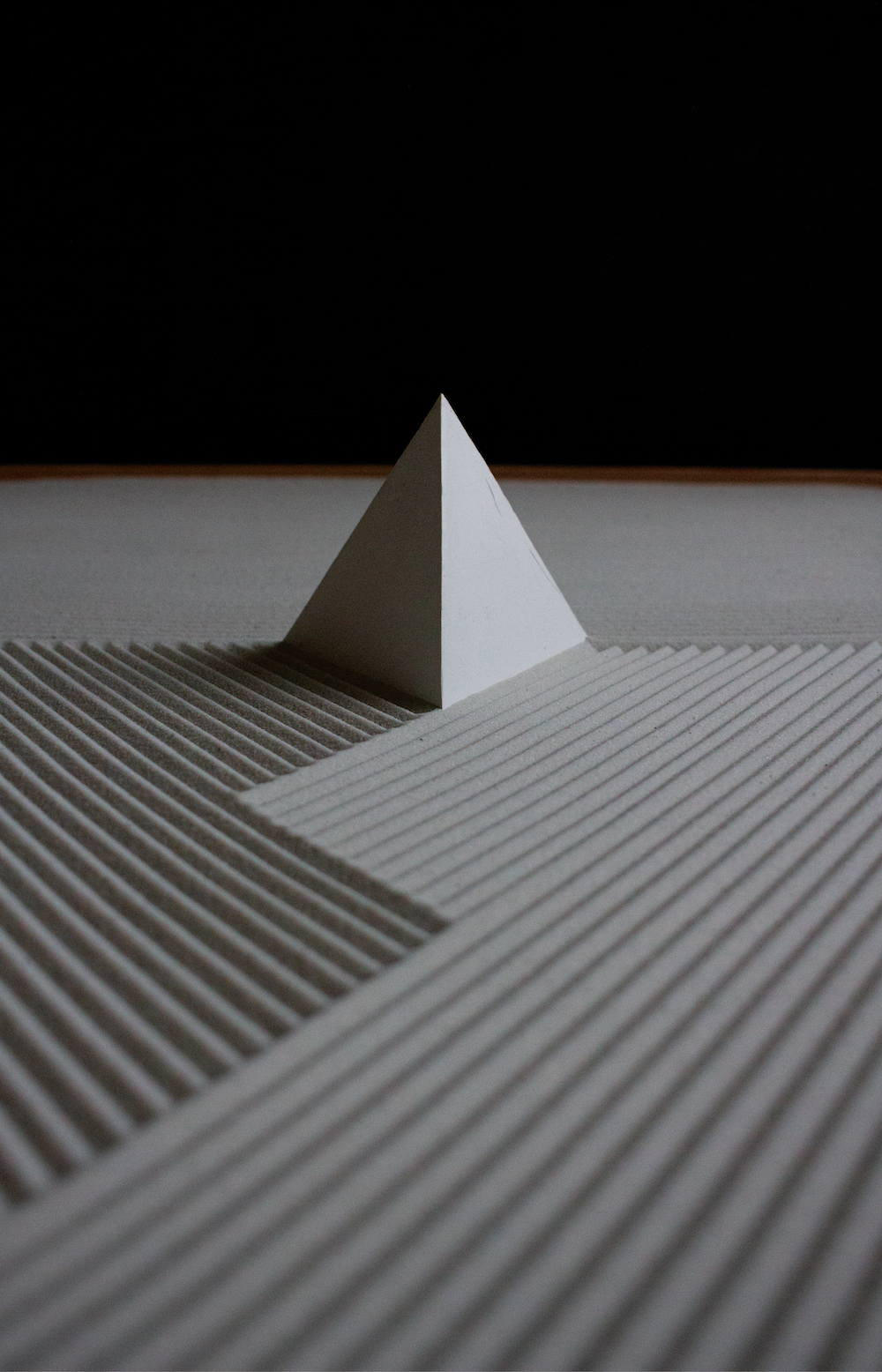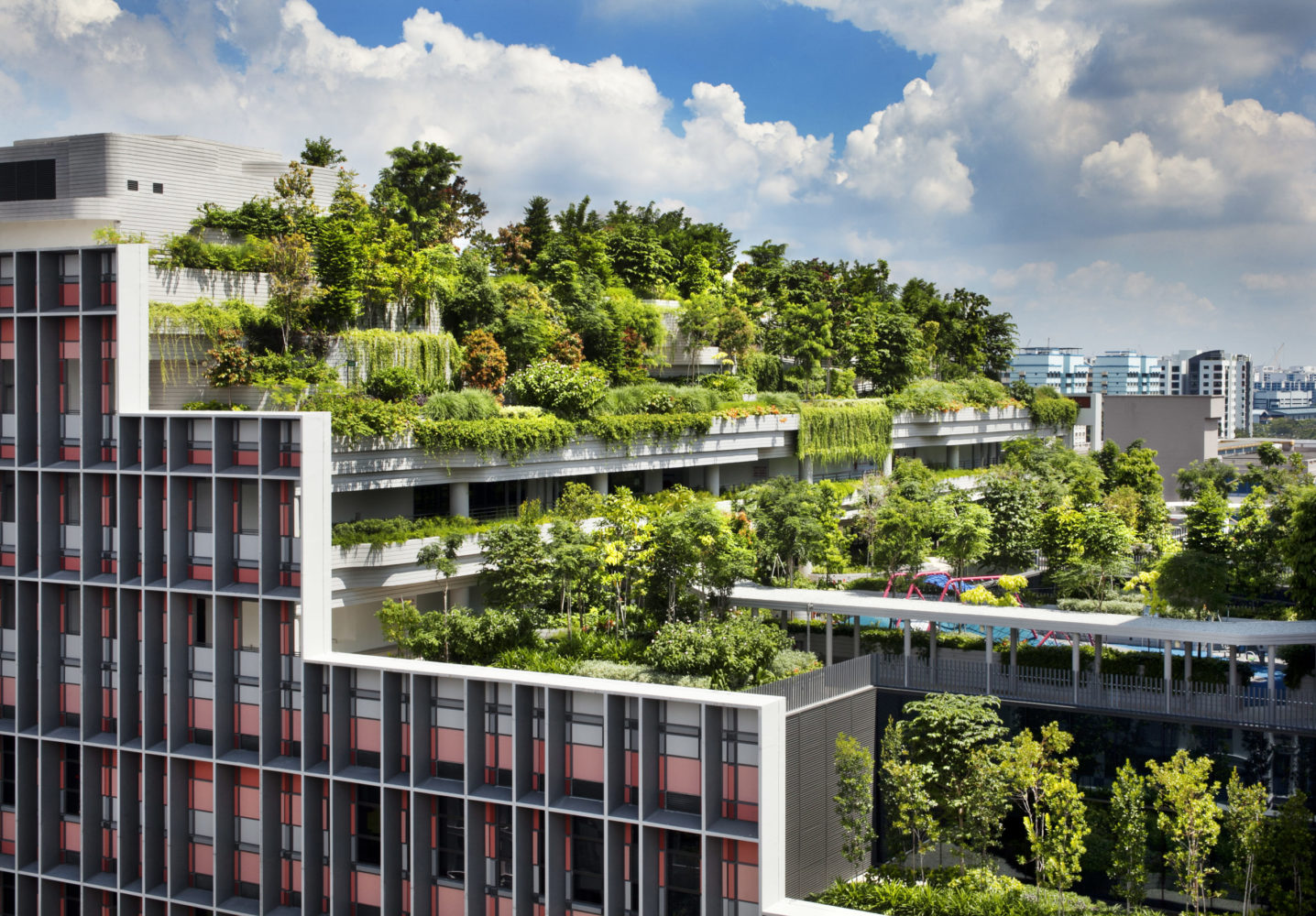The multidisciplinary work of Olivia Lee ranges from product and spatial design to research and ideation. Driven to create emotive experiences that instill a sense of wonder, the Singaporean designer approaches projects organically and curiously. Inspiration can come from a material or a sketch, reimagining a traditional technique, or creating a resolution to a client’s problem.
Lee’s work encourages the public to engage, remember, feel, and share the experience. Small-scale products like home goods and sculptures complement her large-scale projects and briefs, like scenography installations for Hermès, multiconcept workspaces, and intergenerational smart homes. Soothing palettes of pastel pink, sky blue, lotus green, and gold guide emotional responses from furniture pieces and office instruments inside to window displays and public art installations outside.
In addition to her studio practices, Lee is a professor at the National University of Singapore (NUS) and a frequent lecturer. From her post, she encourages creating within the duality of romance and pragmatism, keeping young designers eager, confident, and realistic.
Whitewall spoke with Lee about embedding design with memorable storytelling and how she’s inspiring future generations to be “lucid dreamers.”
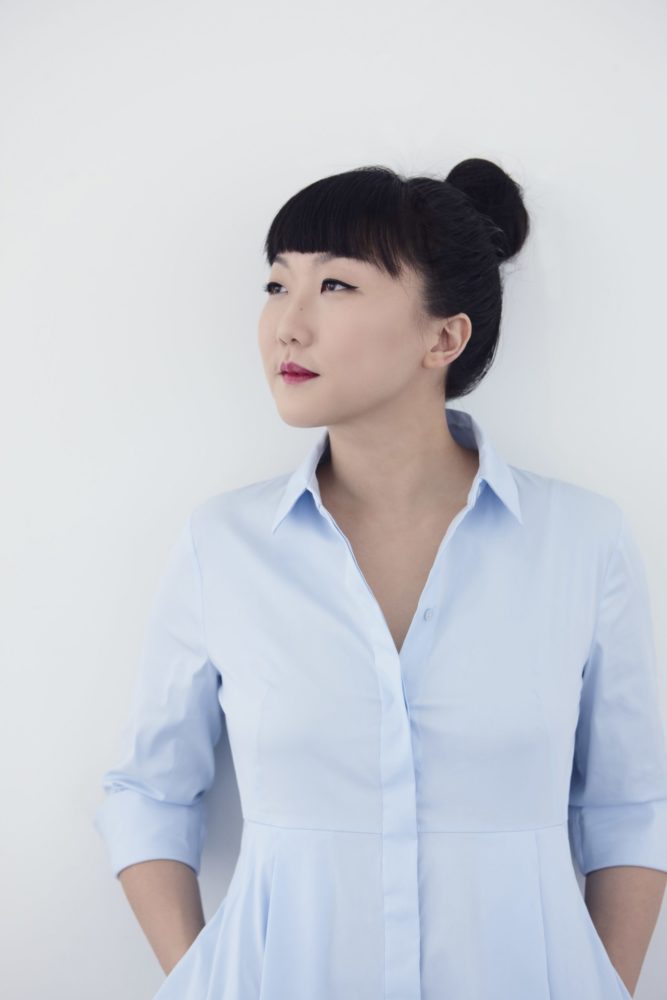
Portrait of Olivia Lee by Lavender Chang.
WHITEWALL: What role does wonder play in your approach to design?
OLIVIA LEE: I think wonder is deeply contextual and therefore project-specific. Wonder has many scales. It can be of the awe-inspiring, encompassing, and profound kind. It can also manifest as something quiet, precious, and imperceptible until the moment of discovery. It could be the transportive and fully immersive quality of a scenography, as is the case of our Hermès Petit h interior project. It could be the secret details and hidden features designed into our accessories collection for Wallpaper* Handmade.
What unites the choices my practice makes to achieve wonder is the approach: begin with childlike fascination, refine with professional obsession, and execute with sophistication. “To see or rediscover the world as a child would” (i.e., to have childlike wonder) is essential to my practice. It drives our process, the outcomes we want to have, and guards us against assumptions, cynicism, and ennui.
WW: In your work, you also navigate the tension between tradition and the future. How do you approach this through both design and narrative?
OL: New design projects are never really new; they are always in reference and in relation to something, building upon a lineage of ideas from the past. Particularly when working with companies and brands with esteemed histories, heritage can often be a burden as much as a boon when trying to move toward the future. For me, design and narrative is analogous. When I am invited to create a new design, I am essentially continuing the story.
A good story makes references and builds upon what previously happened, so the reader can follow the advancement of the plot. A fantastic story is able to turn small details that were seeded in earlier chapters and turn it into unexpected and satisfying developments later in the story.
In a design context, these seeds could be a nod to an old craft technique buried in the archives of the company, an anecdote from the founder or the reinterpretation of an iconic concept with newfound technology. In that way, you find the bridge between the past and future.
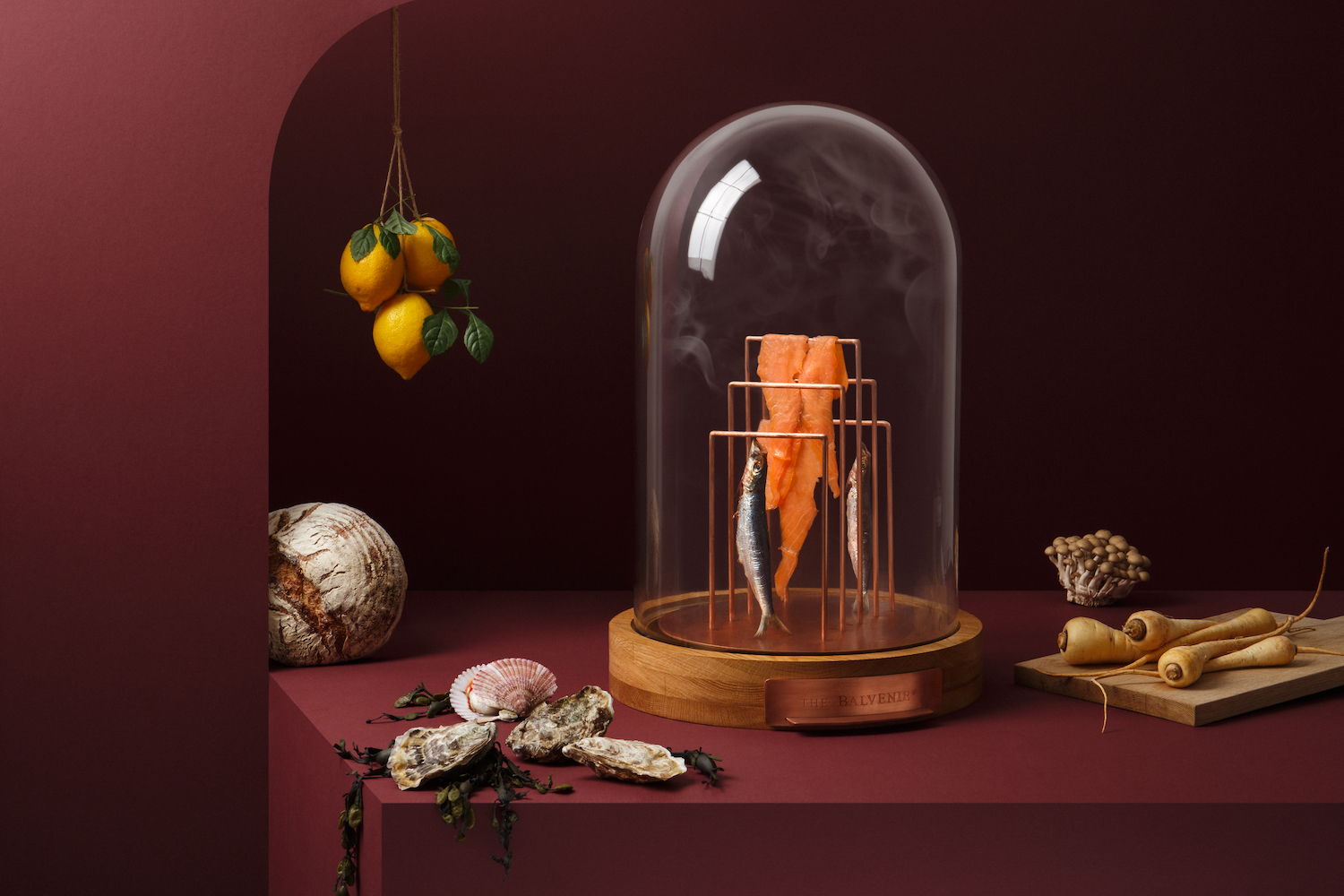
The Canapé Collector for The Balvenie, courtesy of Olivia Lee.
WW: You’ve created more traditional spaces for international partners—like Hermès, Neolith, The Balvenie, and Samsung—but also for intergenerational smart homes for public housing and multistory pop-up stores. What projects do you enjoy the process of most?
OL: I enjoy them all. I search for simplicity in the complex and sophistication in the simple. Shifting polarities is very satisfying, keeps us engaged, and also forces us to be thorough in thinking through all the angles of a new design project. If pressed, the projects I love the most are the ones where we felt we delivered much more romance, wonder, and poetry than we ever imagined we could get away with.
WW: What parts of your background and creative journey are exemplified in your designs?
OL: The common thread across growing up in Singapore, my experiences living in London, and feeling at home in Southeast Asia is a distinct comfort with diversity, contrast, and contradictions. This has proven to be advantageous in my design journey, as creative work often requires engaging with the ambiguous and negotiating with the undefined.
There is a power in cultural dexterity and openness. You discover there is no singular read or way of life. You learn to hold more than two contrasting ideas in your head and rather than be unsettled by it, turn it into opportunity. Your capacity for empathy expands. All these traits are necessary, if not critical, to being a good designer. Particularly when designing with an international audience in mind, it is important for my practice that we are always sensitive, attentive, and cutting across cultures.
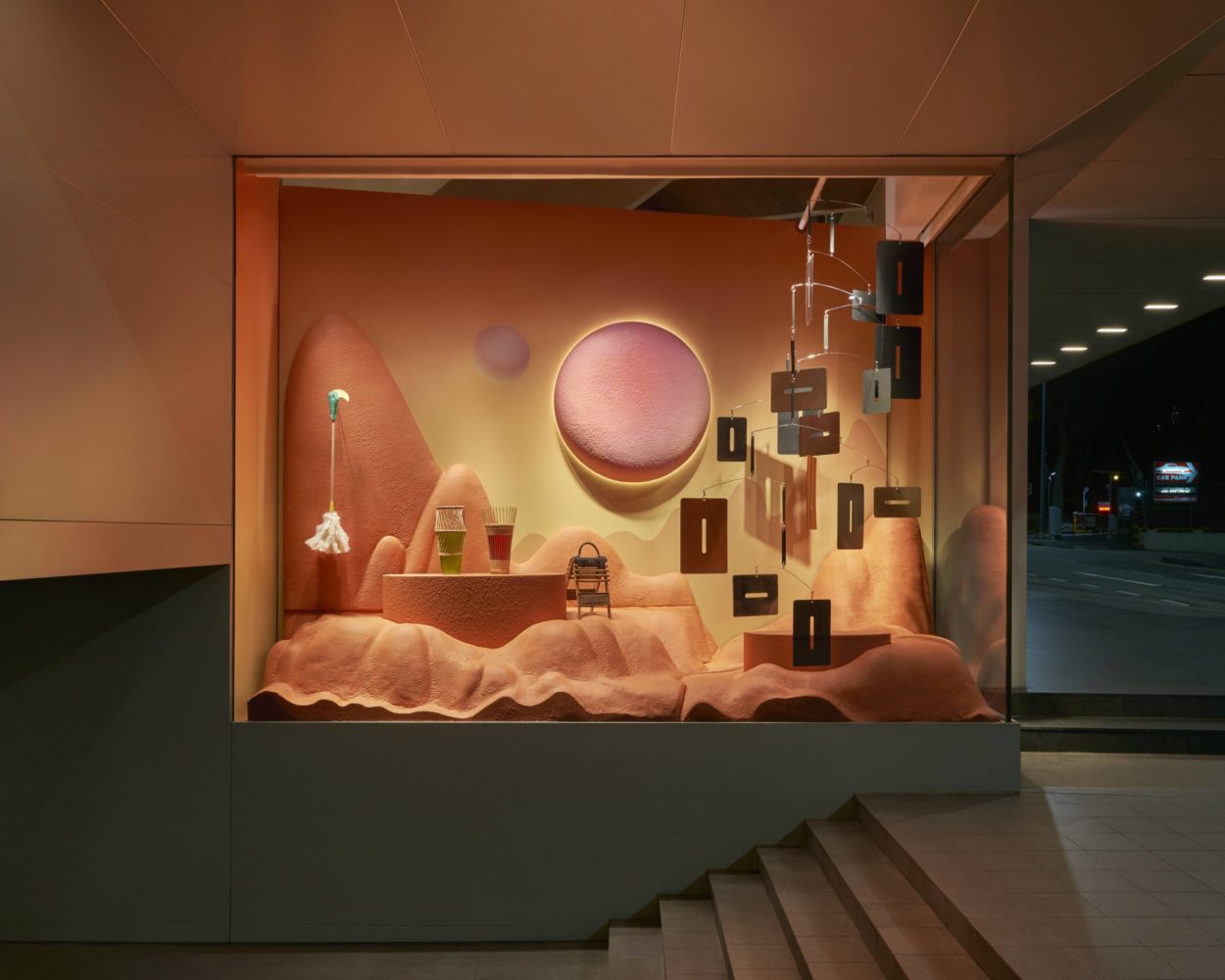
A space exploration themed scenography and pop-up store designed for Hermès petit h, courtesy of Olivia Lee.
WW: In addition to being an adjunct assistant professor at the National University of Singapore (NUS)—specializing in themes of luxury, speculative work, and theories of design—you lecture at NUS’s Division of Industrial Design, Singapore Polytechnic, and Nanyang Academy of Fine Arts. What do you feel is the most important thing you’re teaching your students?
OL: As a practitioner-educator, I have the unique opportunity to extol design’s virtues and impart creative confidence whilst tempering that with the reality of professional practice and dismantling the glamorization of our industry. I like to believe that romance and pragmatism can coexist, and so it is meaningful for me to cultivate generations of what I call “lucid dreamers” young designers who dare to dream with eyes wide open, who are prepared to surmount the hurdles that lie between them and their ambitions.
WW: Where do you feel the future of design in Singapore is?
OL: We are at a crux in Singapore where design has a lot of top-level buy-in. In 2016, the Singapore government created a design master plan with a commitment to transform both private and public sectors to become more design-driven by 2025. In my parent’s generation, design was a vocational profession one resorted to if your grades were not good enough for further education. Today, design is recognized as a national skillset. In my view, that is already a quantum leap for design’s legitimacy and future place in Singapore.
I think the next chapter for Singapore is the redistribution of our newfound enthusiasm for design, to a new norm that belongs to everyday Singaporeans. In matured societies such as Italy or Japan, I have observed a baseline design sensibility that emerges ubiquitously and is transmitted via society rather than through schooling. I see in Singapore’s design future more critical consumption and raised expectations for our way of life. Sophisticated expectations that will further drive sophisticated work.
WW: What are you working on next?
OL: I am currently serving as art director and designing the inaugural product and furniture collection for a new glass-based design brand emerging from a family business with 30 years of glass manufacturing experience. My studio is also designing the headquarters for an incredible A.I. start-up that is disrupting healthcare protocols. We are also continuing our scenography work for the luxury sector as well as embarking on a big public art commission.
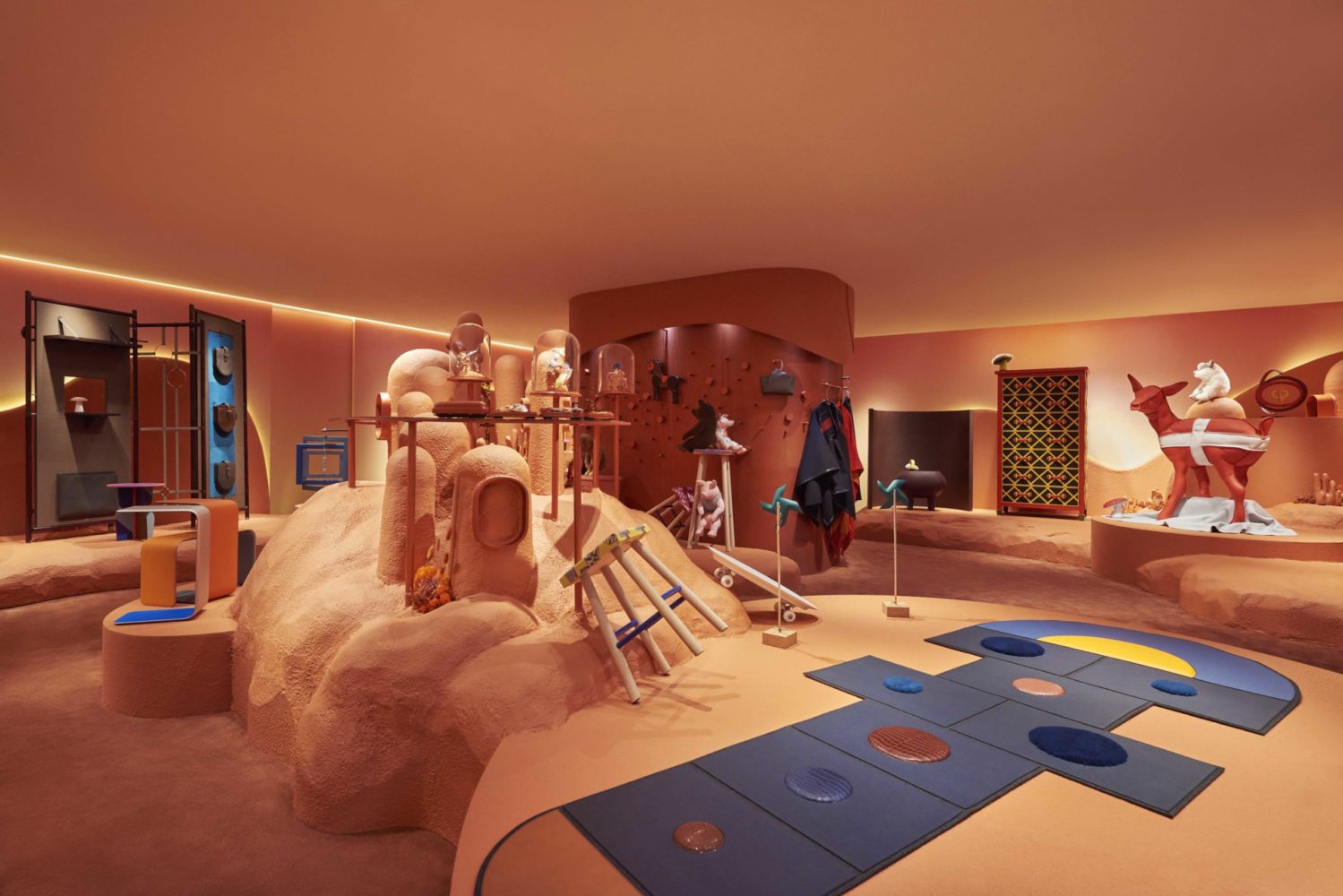
A space exploration themed scenography and pop-up store designed for Hermès petit h, courtesy of Olivia Lee.




